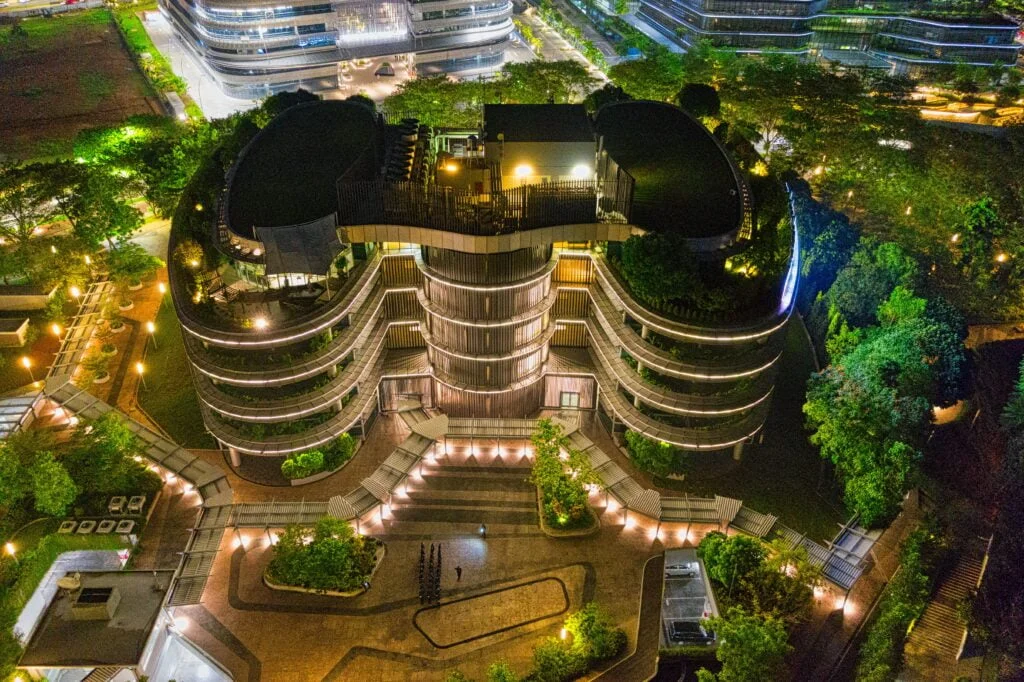The construction industry is an important component of the Philippine economy, greatly contributing to the country’s growth and development. It is, however, a resource-intensive and toxic sector that contributes to environmental deterioration and climate change.
As a result, many Philippine construction businesses are now embracing green technology and sustainable practices in order to lessen their environmental effect and create a more sustainable future. In this essay, we will look at the role of green construction in the Philippines and how it might aid in the development of a more sustainable future.

What is Green Construction?
Green construction, also known as sustainable construction, is the practice of planning and developing structures that have a low environmental effect and encourage long-term development. Green building entails the use of sustainable materials, the implementation of energy-efficient designs, the reduction of waste, and the promotion of sustainable site development practices. Green building certifications and standards that support sustainable construction methods are also included.
Why is Green Construction Important in the Philippines?
The Philippines is extremely vulnerable to the effects of climate change, such as increasing sea levels, extreme weather events, and water scarcity. As a result, it is critical for the country to use sustainable development strategies, such as green construction, in order to lessen its environmental effect and create a more sustainable future. Green building can aid in the reduction of greenhouse gas emissions, the conservation of natural resources, the improvement of indoor air quality, and the promotion of a healthier and more sustainable built environment.
Examples of Green Construction Practices in the Philippines
Using Sustainable Materials
Numerous construction businesses in the Philippines are now using sustainable materials in their building projects, such as bamboo, recycled steel, and reclaimed wood. These materials are not only more environmentally friendly, but also more cost-effective and long-lasting than traditional building materials. Bamboo, for example, is a renewable resource that is strong, lightweight, and extremely adaptable, making it a great substitute for typical building materials like concrete and steel.
Energy-Efficient Designs
Energy-efficient building designs, such as solar panels, wind turbines, and geothermal heating and cooling systems, can drastically cut energy usage and expenses in the long run. Numerous Philippine building businesses are increasingly using these designs to encourage sustainability. The Department of Energy, for example, has developed a program that offers incentives to buildings that employ renewable energy sources such as solar panels and wind turbines.
Green Building Certifications
The Philippine Green Building Council’s BERDE (Building for Ecologically Responsive Design Excellence) accreditation is one of several green building certifications offered in the Philippines. These certificates promote green building techniques and assist construction enterprises in lowering their environmental effect. For example, the BERDE accreditation evaluates building performance in terms of energy efficiency, water conservation, indoor air quality, and waste management.
Waste Reduction
Construction firms can also cut waste by introducing recycling programs, using prefabricated components, and employing construction waste management procedures. Not only do these strategies cut waste, but they also save time and money. Prefabricated materials, for example, can dramatically minimize waste and building time, resulting in lower prices and faster project completion.
Sustainable Site Development
To reduce their environmental impact, construction businesses can also employ sustainable site development strategies such as rainwater collecting, native planting, and erosion management. Rainwater collection, for example, can assist reduce water consumption and flood risk, whilst native landscaping can increase biodiversity while reducing the need for irrigation. Erosion control methods, such as the use of vegetation and retaining walls, can aid in the prevention of soil erosion and the protection of neighboring rivers.
Benefits of Green Construction in the Philippines
Green building approaches can provide various advantages to construction businesses, building owners, and the environment, including:
Lower Operating Costs
Green buildings are energy-efficient, which can lead to cheaper operating costs for building owners. Building owners can save money on electricity bills and other utilities by lowering their energy consumption. Furthermore, green buildings are frequently constructed to last longer and require less maintenance, resulting in lower long-term running expenses.
Improved Indoor Air Quality
Green buildings use natural ventilation systems, non-toxic building materials, and air filtering technologies to achieve better indoor air quality. This can assist to lower the risk of respiratory problems and other health problems caused by poor indoor air quality.
Reduced Environmental Impact
Green construction approaches can considerably reduce the construction industry’s environmental effect by decreasing waste, conserving natural resources, and lowering greenhouse gas emissions. This can aid in mitigating the consequences of climate change and safeguarding the environment for future generations.
Enhanced Corporate Social Responsibility
Green construction techniques reflect a construction company’s commitment to corporate social responsibility and environmental management. This can improve company reputation and attract clients who value sustainability and environmental stewardship.
Challenges of Green Construction in the Philippines
Notwithstanding the benefits of green construction, implementing sustainable building methods in the Philippines faces various hurdles, including:
Lack of Awareness and Education
Many construction companies in the Philippines are unaware of green building methods and the benefits of sustainable development. As a result, higher awareness and education on sustainable building principles are required to encourage their adoption.
High Cost of Green Building Materials
Green building materials can be more expensive than regular building materials, deterring construction businesses from using sustainable methods. Yet, the long-term advantages of green construction, such as cheaper running costs and lesser environmental impact, frequently surpass the initial investment in green building materials.
Limited Access to Financing
In the Philippines, access to financing for green building projects might be limited, making it difficult for construction businesses to fund sustainable projects. As a result, improved access to financing for green construction projects is required to encourage their adoption.
Conclusion
In the Philippines, green construction is an important component of long-term development. Given the country’s sensitivity to the effects of climate change, it is critical that it embrace sustainable building methods in order to reduce environmental impact and create a more sustainable future.
Green building practices, such as the use of sustainable materials, energy-efficient designs, green building certifications, waste reduction, and sustainable site development practices, can significantly reduce the environmental impact of the construction industry and provide numerous benefits to construction companies, building owners, and the environment.
While implementing sustainable building methods in the Philippines presents various hurdles, improved knowledge, education, and access to financing can assist promote their adoption and help develop a more sustainable future.
To see other material construction, please see here.
To know other construction guides, tips, and methodology for beginners, veterans, and contractors, please see here.

